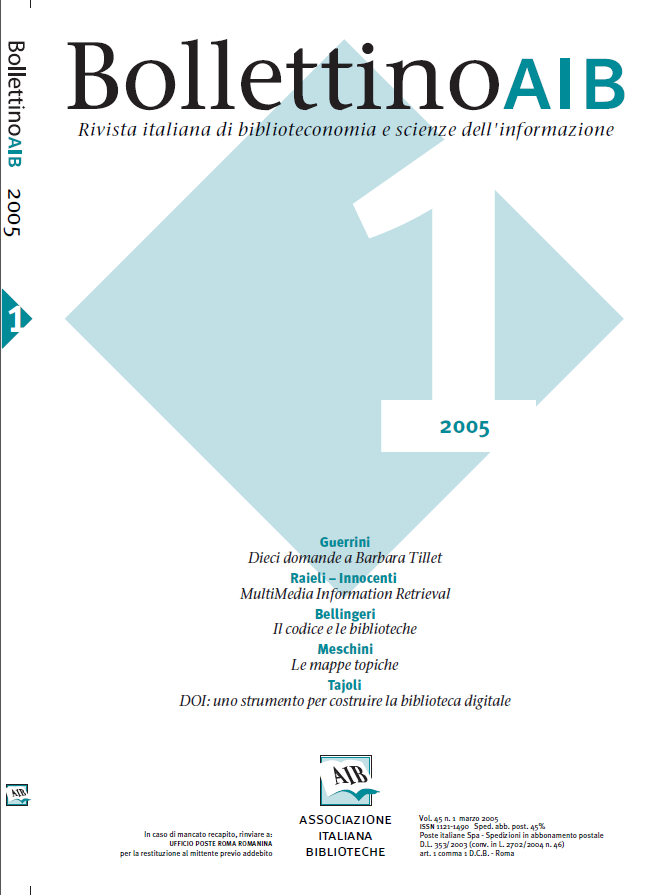Le mappe topiche: come imparai a non preoccuparmi e ad amare i metadati
Contenuto principale dell'articolo
Abstract
Topic Maps are a technology for representing and organizing information, and they are constantly raising more and more interest in different sectors, thanks to their versatility. The main feature of a Topic Map is the creation of a semantic layer which can be applied to an existing group of resources, so to have new logical links and paths of exploration between different set of information. The logical structure of this kind of map is very simple. Each argument is represented by something called topic. Between topics is possible to create associations, which can be of many types, and each topic has a different role. Finally, there are the occurrences, which are the concrete embodiments of the abstract arguments represented by topics. There is no limit to the number or nature of the occurrences of a topic, they could be both digital than analogical, and in any format. The power of this model resides in this separation between these two levels, the abstract and the real one.
The development of a language for the description of a Topic Maps began with SGML and what has became the HyTime ISO standard. Currently there is also a specification which utilizes the XML syntax and is called XTM – XML Topic Maps. On the web is now possible to find many examples and applications which shows the vast potentialities of this paradigm, and the most famous is perhaps the Italian Opera Map, developed by Steven Pepper, one of the coauthors of the XTM specifications. In the field of Humanities Computing a very interesting application has been realized by John Walsh, who showed it during the DRH 2004 in Newcastle: the Swinburne Topic Map, about the famous Victorian poet and built upon the digital version of his poems encoded in TEI.
Topic Maps are growing in interest and they can really help in making the web a place more ordered; moreover the integration and interoperability with the other technologies related to the semantic web, such as Dublin Core and RDF, are also being considered, and there is potentially no limit to the possibilities of use. Of course, the real diffusion that the Topic Maps will have depends not only by their potentialities, but also from the adoption of this technology by the big players in the information business.
The development of a language for the description of a Topic Maps began with SGML and what has became the HyTime ISO standard. Currently there is also a specification which utilizes the XML syntax and is called XTM – XML Topic Maps. On the web is now possible to find many examples and applications which shows the vast potentialities of this paradigm, and the most famous is perhaps the Italian Opera Map, developed by Steven Pepper, one of the coauthors of the XTM specifications. In the field of Humanities Computing a very interesting application has been realized by John Walsh, who showed it during the DRH 2004 in Newcastle: the Swinburne Topic Map, about the famous Victorian poet and built upon the digital version of his poems encoded in TEI.
Topic Maps are growing in interest and they can really help in making the web a place more ordered; moreover the integration and interoperability with the other technologies related to the semantic web, such as Dublin Core and RDF, are also being considered, and there is potentially no limit to the possibilities of use. Of course, the real diffusion that the Topic Maps will have depends not only by their potentialities, but also from the adoption of this technology by the big players in the information business.
Dettagli dell'articolo
Fascicolo
Sezione
Articoli

Questo lavoro è fornito con la licenza Creative Commons Attribuzione - Condividi allo stesso modo 4.0.
